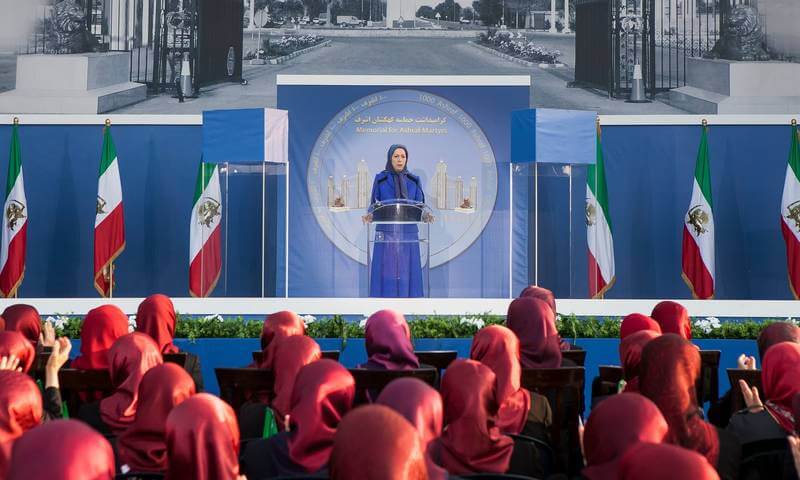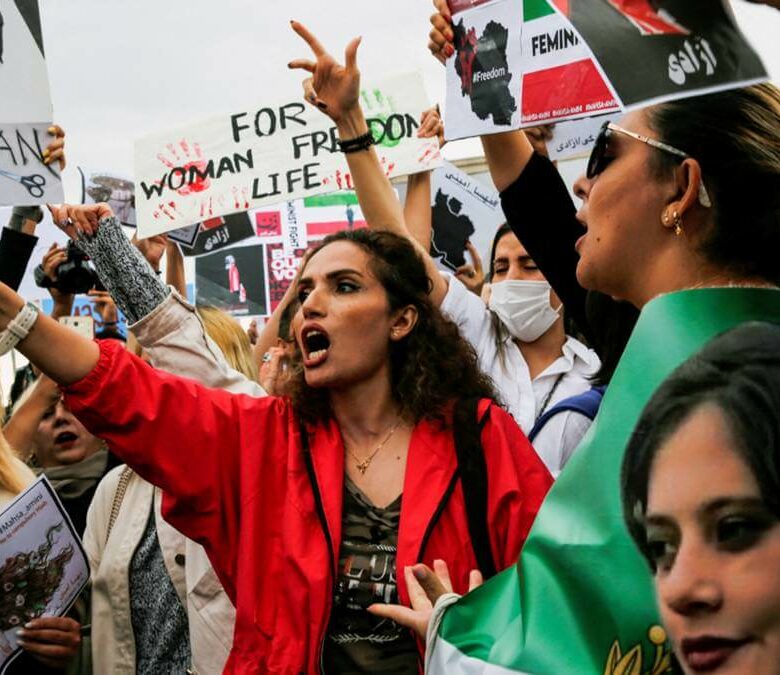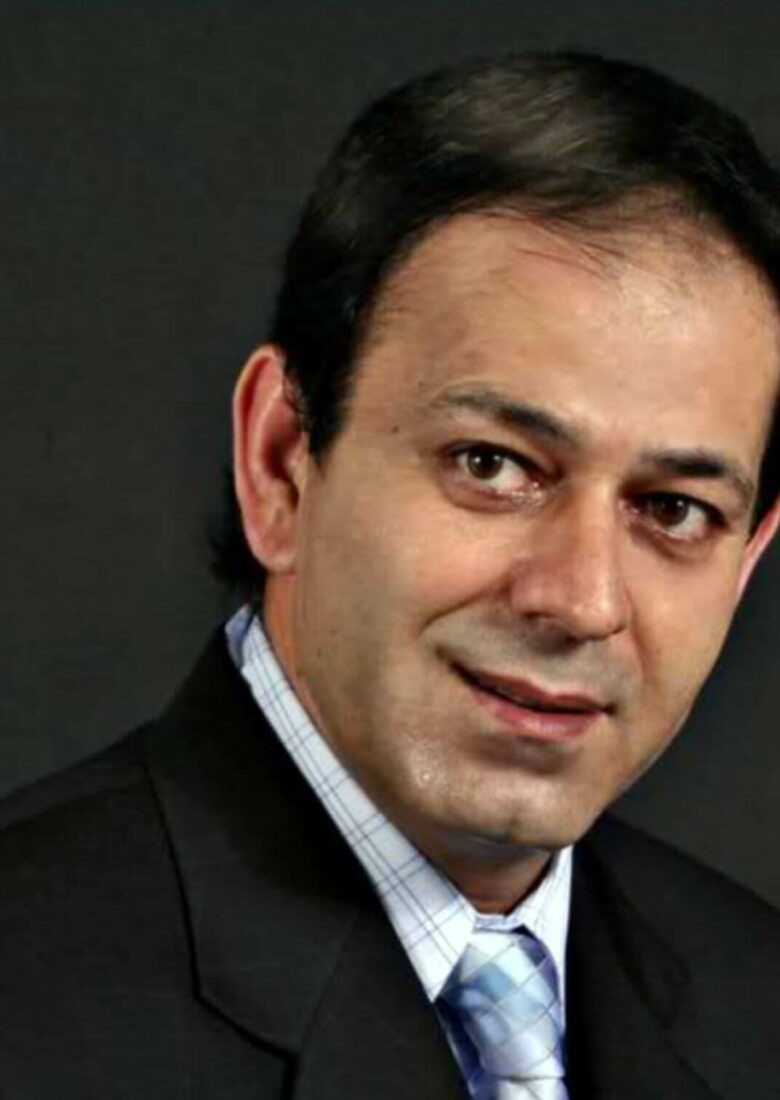
L’Ombre Longue de la Liberté
October 29, 2024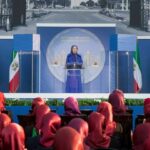
Femmes, Vie et Sexualité dans l’Organisation des Moudjahidines du Peuple d’Iran (OMPI)
January 7, 2025Woman, Life, Freedom, in the People’s Mojahedin Organization of Iran
March 8th marked International Women’s Day, a day dedicated to honoring women worldwide for their resilience, contributions, and the continued fight for equality. International Women’s Day is not only a celebration of progress but a reminder of the ongoing struggle for gender equality and human rights. It is a day that stands as a covenant for women’s rights, advocating for the realization of an ideal that has long been the backbone of social progress.
From homes to schools, factories to universities, and beyond, women are undeniably integral to the fabric of society. Their contributions to building the future of humanity cannot be overstated. History has preserved the legacies of women who brought about significant transformations in politics, science, the arts, and much more. From pioneering scientists like Marie Curie to leaders such as Angela Merkel, women have shaped the course of human history. And yet, despite these accomplishments, women around the world continue to face systemic abuse and exploitation in various sectors of society.
This abuse, in its many forms, is a global issue that manifests in environments ranging from Hollywood to international humanitarian organizations. Notable cases like those involving Larry Nassar, the former doctor of the U.S. gymnastics team, or the infamous Hollywood producer Harvey Weinstein, show the depth of the issue. These stories represent only a fraction of the global crisis of sexual and gender-based violence that women face. From political parties to international organizations, sexual abuse and exploitation are rampant, and if not addressed, this issue will pose an enormous challenge to humanity’s future.
In light of this, we turn our focus to the People’s Mojahedin of Iran (MEK), an Iranian political organization led by Massoud and Maryam Rajavi. What does the MEK, an organization that claims to champion women’s rights, actually say about the role of women within its ranks? Who are the “Mujahid women” that the Rajavis promote as the ideal leaders for women in Iran and the world? What do these women stand for, and what is the true situation that governs their relationships and emotional lives? Today, we explore the intersection of women, life, and sexuality within the MEK’s rigid ideological framework.
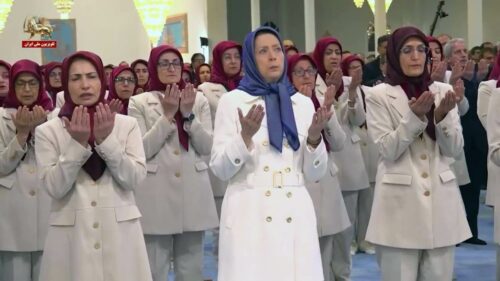
Maryam Rajavi praying in Islamic style in Camp Ashraf 3 – Albania
Examining the MEK’s Treatment of Women:
The People’s Mojahedin Organization of Iran (MEK) was founded in the 1960s as a Marxist-Islamist revolutionary group, originally aiming to overthrow the regime of Shah Mohammad Reza Pahlavi. The group initially claimed to fight for the rights of the Iranian people, particularly focusing on women’s liberation. However, as the group evolved, its policies and practices surrounding gender and sexuality diverged significantly from its early promises.
At the heart of the MEK’s ideology is a strong devotion to the leadership—specifically, Massoud and Maryam Rajavi. The group is structured around an authoritarian system, where loyalty to the leadership supersedes personal attachments, including romantic relationships. Over time, the MEK instituted policies that would fundamentally alter the role of women within the organization. One of the most controversial practices within the MEK is the separation of couples. Married members were often forced to separate, with the belief that personal relationships were a distraction from the collective goal of revolution. This was part of the broader ideological vision of creating a “unified” society where individual desires were subordinated to the cause.
This severe control over personal relationships extended to sexuality. Sexual expression was tightly regulated and often suppressed. Romantic love—in the traditional sense—was not only discouraged but condemned as a distraction from the ideological mission. The MEK promoted an image of the “Mujahid woman” who was, in theory, a model of self-sacrifice and ideological purity. This woman, who was held up as a symbol of resistance, was expected to forgo her own personal desires and dedicate herself fully to the organization’s goals.
The Psychological and Emotional Impact:
The emotional toll of such an environment is immense. For women in the MEK, the repression of natural emotional bonds and the forced renunciation of personal relationships took a heavy psychological toll. The forced separation from family members and partners created an environment of isolation and psychological strain. While the leadership promoted a narrative of empowerment and revolutionary zeal, many members, particularly women, found themselves emotionally detached, struggling with the denial of their basic human desires.
Many former members of the MEK have spoken out about the trauma they endured. They describe an environment where emotional manipulation was rampant, and personal freedoms were sacrificed for the sake of the organization. Women in the MEK were often required to perform roles that were, on the surface, empowering but were ultimately limiting, stripping them of their autonomy. Despite claims of female leadership, the organization’s policies, including the suppression of romantic relationships, created a false narrative of female empowerment.
Furthermore, the MEK’s treatment of women’s sexuality was particularly repressive. Women were expected to view their sexuality not as a natural part of their identity, but as something to be controlled and regulated for the sake of the cause. In this way, the MEK mirrored other authoritarian regimes that promoted a monolithic view of gender—one that valued women’s contributions to the revolutionary cause but ultimately limited their personal autonomy.
Gender, Power, and Control:
The MEK’s policies regarding women’s roles within the organization reflect broader issues of power, control, and ideology. Women in the MEK were often idealized as the “perfect revolutionaries,” but the organization’s rules made it clear that personal identity and emotions came second to ideological conformity. This mirrors cult-like dynamics, where individual freedom is crushed in favor of a unified, ideologically driven group. The MEK’s leadership presented women as icons of resistance, but the organization’s treatment of them raises significant questions about the authenticity of this empowerment.
Massoud and Maryam Rajavi were not simply political leaders; they were seen as the ultimate authorities, often in a messianic light. In this context, women in the MEK were not allowed to explore personal romantic relationships or sexual expression. Instead, they were conditioned to view their devotion to the Rajavis as the highest form of love and loyalty. This distorted the very concept of love, turning it into a political tool.
Conclusion:
As we reflect on the MEK’s treatment of women, it is clear that the organization’s claims of gender equality and female empowerment are not grounded in the reality of how it operates. Women in the MEK are subjected to severe restrictions on their emotional and sexual lives, with their primary value being their loyalty to the cause. Despite the organization’s narrative of female empowerment, the emotional cost of these policies is immense. Women are conditioned to view their identities solely in terms of their service to the leadership and the revolution, at the expense of their personal well-being.
On this International Women’s Day, as we honor the progress that women have made globally, it is important to remember that the fight for women’s rights is ongoing. Women in all parts of the world, including within organizations like the MEK, deserve the right to love, live, and express themselves freely, without the constraints of ideology and exploitation. Until that happens, the ideal of gender equality will remain an unfulfilled promise for too many women.

Women of the People’s Mojahedin-e Khalq operating with tanks in Iraq
The feelings and romantic emotions in the Mujahedin-e Khalq (MEK) are complex and shaped by the group’s strict ideological framework, disciplined lifestyle, and historical context. The MEK, founded in 1965 as an Iranian Marxist-Islamist political-militant group, has evolved over decades, undergoing significant ideological shifts. At its core, however, the MEK promotes a strong sense of devotion to the cause of overthrowing the Iranian government and establishing a democratic, secular alternative. This intense political focus has a profound impact on personal relationships, including romantic feelings.
1. Ideological and Organizational Structure:
The MEK operates under a highly controlled and hierarchical structure, which includes a rigid system of ideological education and discipline. This system emphasizes loyalty to the leadership, particularly to its founder, Massoud Rajavi. The group enforces strict rules on personal behavior, including relationships. In its early years, the MEK encouraged marriage as a way to strengthen unity, but over time, personal relationships were subordinated to the group’s ideological goals. Romance, in the traditional sense, is largely discouraged. Instead, the MEK promotes a kind of collective, non-individualistic devotion to the movement.
2. Love and Marriage in the MEK:
In the MEK, marriage and romantic relationships are not viewed as personal choices or emotional bonds but as sacrifices to the greater good of the organization. This is particularly evident in the regime’s practices under the leadership of Massoud and Maryam Rajavi, where personal relationships were systematically dissolved. One of the most controversial aspects of MEK’s organizational culture is its prohibition of romantic or familial ties between members. Married couples in the MEK are often forced to separate, and individuals are encouraged to “renounce” their previous emotional attachments to family or partners to fully dedicate themselves to the cause. This is done under the belief that personal attachments to family or love are distractions from the greater revolutionary mission.
3. Love as Loyalty to the Cause:
In the MEK, romantic emotions and feelings are redirected and reinterpreted through the lens of loyalty to the organization and its leaders. The leadership, especially the Rajavis, is revered almost as divine figures, and members are expected to channel their emotions towards them rather than individual romantic partners. This creates an environment where feelings of love and affection are transformed into a form of devotion and obedience to the cause. In this context, “love” can be understood more as an allegiance to the movement’s ideology than as a personal emotional experience.
4. Psychological and Emotional Impact:
The intense control over members’ personal lives can lead to psychological strain, particularly among those who enter the group with pre-existing emotional attachments. The separation from family members, forced ideological re-education, and the prohibition of romantic relationships often create feelings of isolation, disillusionment, and emotional numbness. For those who are deeply committed to the group, however, the absence of traditional romantic relationships can be rationalized as necessary for the collective struggle.
5. Gender Dynamics:
The MEK also has a gendered component to its approach to romantic emotions. Women in the MEK are often required to suppress their personal identities, including desires for romantic attachment. Women’s roles within the organization are framed around serving the cause, often in leadership or supportive roles, but they are also expected to relinquish family and romantic relationships. The suppression of gendered affection and familial bonds reinforces the MEK’s strict disciplinary environment, which discourages any form of individualism, including romantic feelings.
6. The Changing Attitudes Toward Romance and Love:
Over the years, especially after the organization’s relocation to Iraq in the 1980s and its eventual disbandment as a militia group, the MEK’s leadership has attempted to present a more moderate image to the outside world. While some aspects of romantic relationships may be less tightly controlled now, the legacy of repression around emotions and love remains a deeply ingrained part of MEK’s history and culture. Today, former members of the MEK often report the emotional toll of these practices, expressing feelings of betrayal and trauma related to the dismantling of their personal relationships.
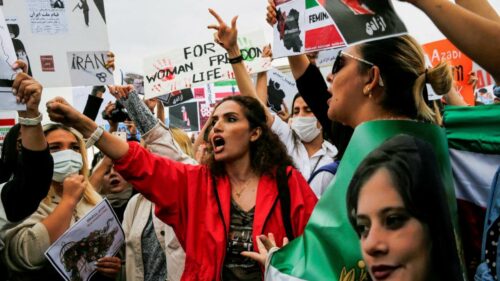
Iranian women protest against compulsory hijab-Women, Life, Freedom
Conclusion:
Romantic emotions within the MEK are heavily shaped by the group’s political and ideological goals. Love, in its traditional sense, is suppressed in favor of loyalty and commitment to the organization. Personal feelings are viewed as secondary to the collective goal of overthrowing the Iranian regime. The psychological consequences of this system are complex, and many former members report feelings of emotional suppression and isolation. In this environment, romance is not a personal, emotional experience but a tool for ideological conformity and sacrifice to the larger cause.
***
Woman, Life, Freedom, in the People’s Mojahedin Organization of Iran (MEK)
By, Javad FIROZMAND
a former Central Council member and ex-member of the People’s Mojahedin Organization of Iran (MEK/PMOI).
BBC News: The Iranian opposition fighters who mustn’t think about sex


